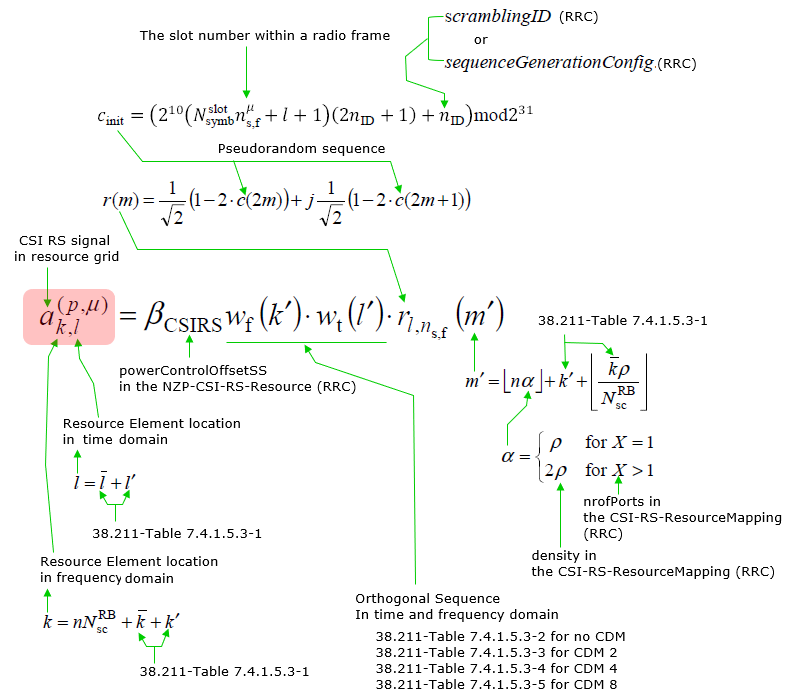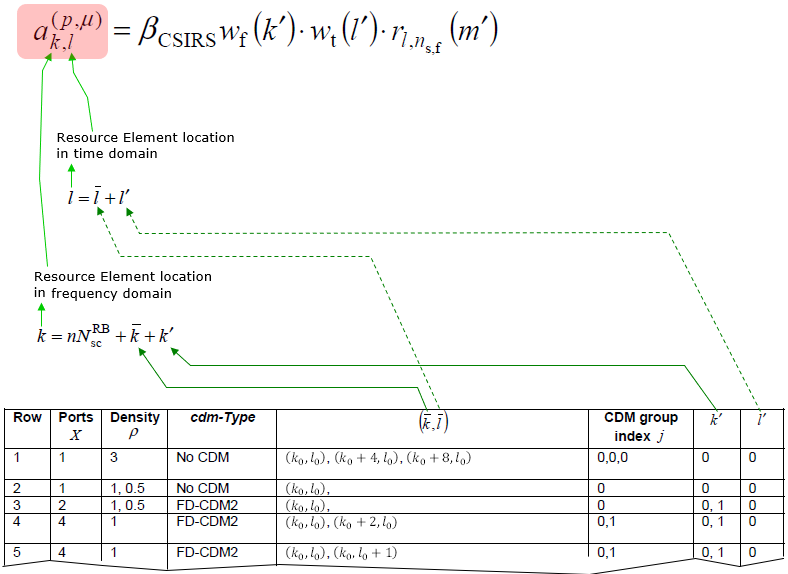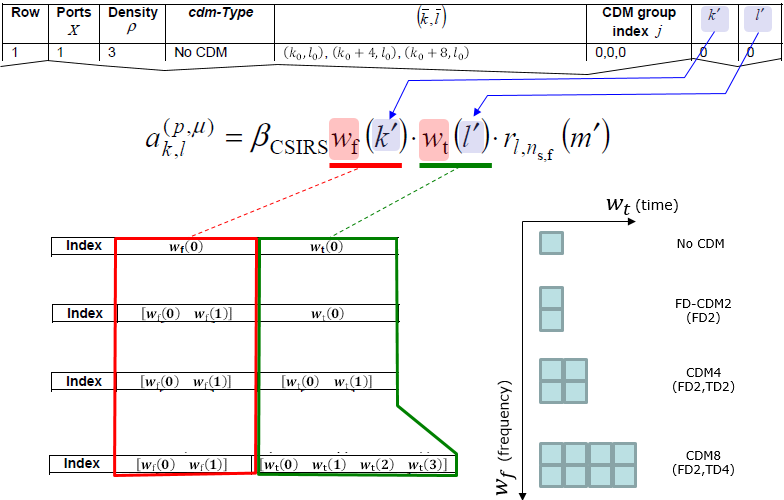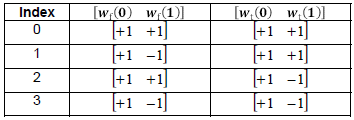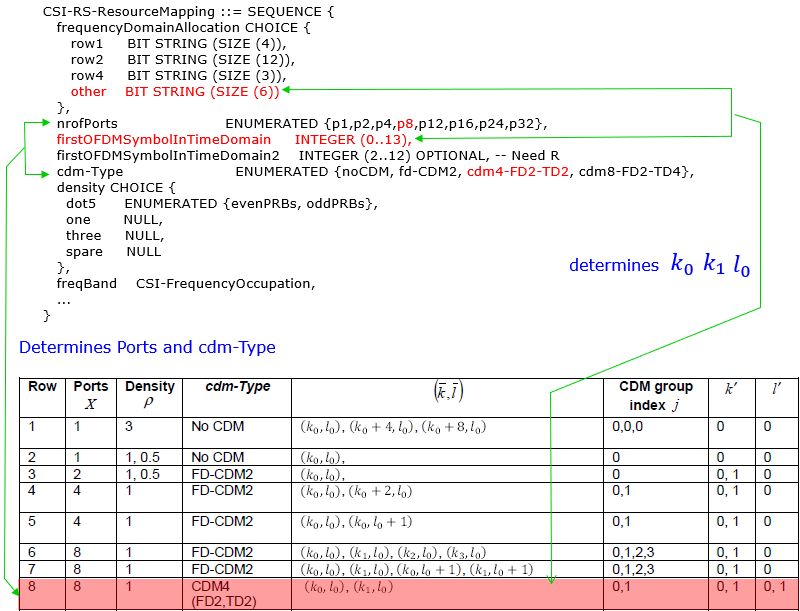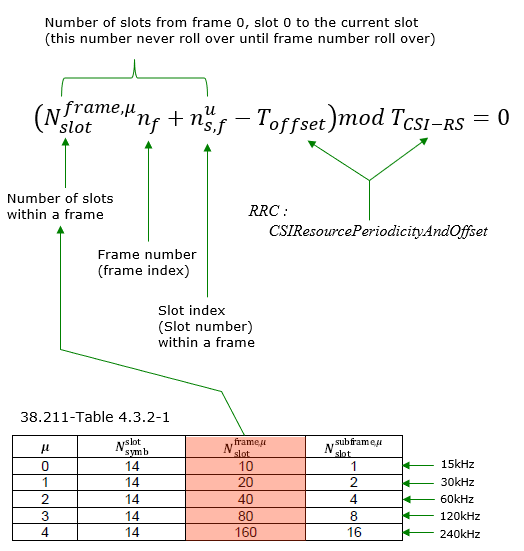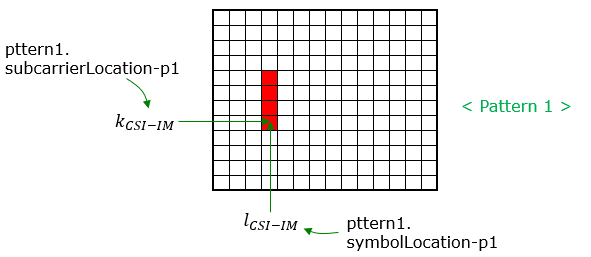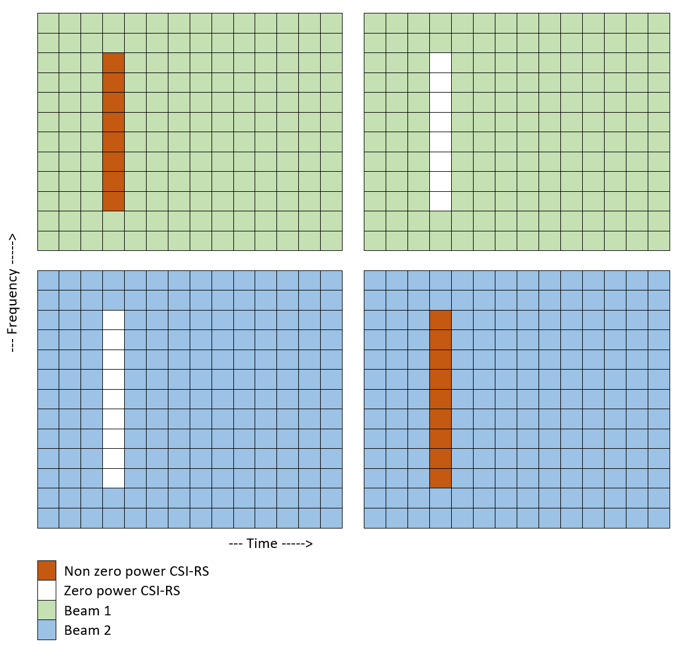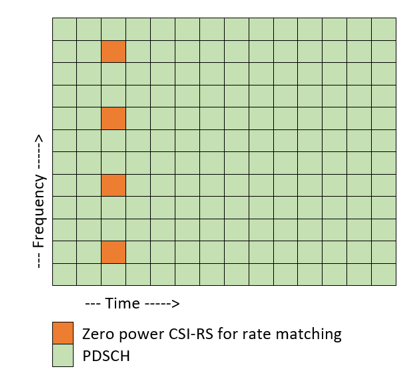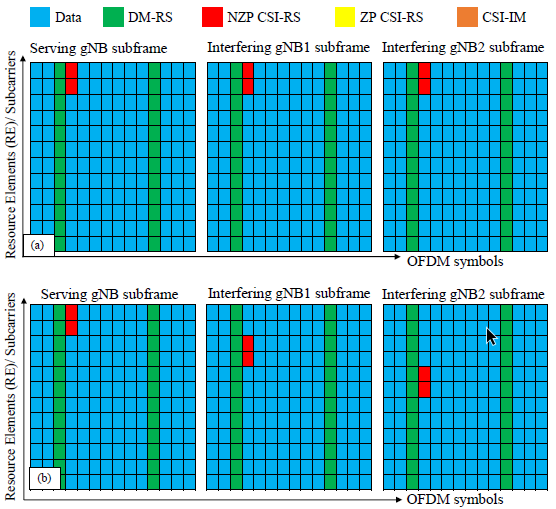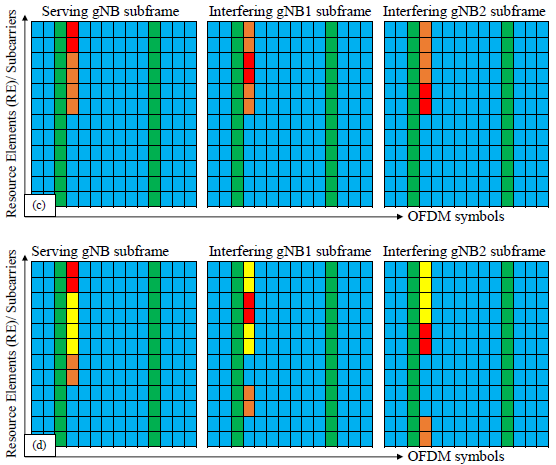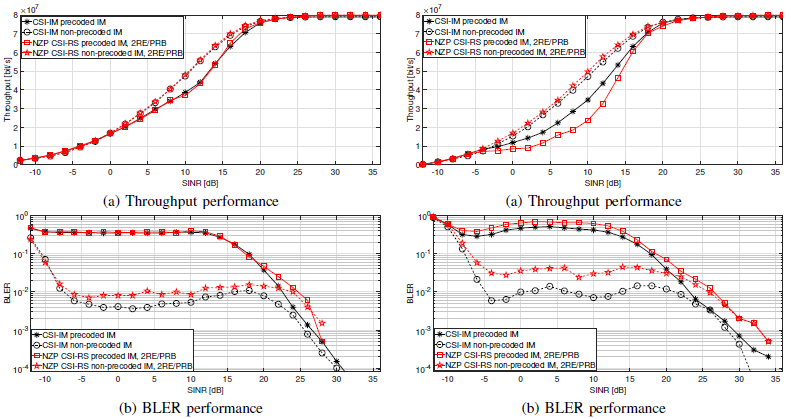|
|
|||||||||||||||||||||||||||||||||||||||||||||||||||||||||||||||||||||||||||||||||||||||||||||||||||||||||||||||||||||||||||||||||||||||||||||||||||||||||||||||||||||||||||||||||||||||||||||||||||||||||||||||||||||||||||||||||||||||||||||||||||||||||||||||||||||||||||||||||||||||||||||||||||||||||||||||||||||||||||||||||||||||||||||||||||||||||||||||||||||||||||||||||||||||||||||||||||||||||||||||||||||||||||||||||||||||||||||||||||||||||||||||||||||||||||||||||||||||||||||||||||||||||||||||||||||||||||||||||||||||||||||||||||||||||||||||||||||||||||||||||||||||||||||||||||||||||||||||||||||||||||||||||||||||||||||||||||||||||||||||||||||||||||||||||||||||||||||||||||||||||||||||||||||||||||||||||||||||||||||||||||||||||||||||||||||||||||||||||||||||||||||||||||||||||||||||||||||||||||||||||||||||||||||||||||||||||||||||||||||||||||||||||||||||||||||||||||||||||||||||||||||||||||||||||||||||||||||||||||||||||||||||||||||||||||||||||||||||||||||||||||||||||||||||||||||||||||||||||||||||
|
CSI RS in DetailAs in LTE CSI, NR CSI (Channel Status Information) is a mechanism that a UE measure various radio channel quality and report the result to Network(gNB). There are pretty complicated factors involved in CSI operation, but this page would focus on CSI signal generation and Resource Mapping. Other CSI operation procedure will be explained in other page. For most of LTE case, we don't need any special signal for CSI since we used Cell Specific Reference Signal. However, from LTE TM9 we stared using a special reference signal for CSI. So if you have some understandings on LTE CSI Reference signal in TM9 or higher, it would be relatively easier for you to understand this page even if NR CSI RS(Reference Signal) is constructed more complicated way comparing to LTE CSI RS.
Sequence Generation and Resource MappingAs you may notice in the following equation, NR CSI is based on Pseudo Random Sequence. Then this sequence is multipied by sepcially designed weighting sequence in both time domain and frequency domain and than scaled by power scaling factor. And then this sequence is mapped to a set of specific resource elements in Resource Grid. All of these process can be summarized as follows and so many factors are involved in this procedure. If you are not the physical layer developer who need to implement this part, you don't need to go through this to the full details, but it will be beneficial to pay attention to various parameters (especially RRC parameters) involved in this process.
Tables for Resource Element MappingFollowing table contains everything about the physical resource allocation for CSI-RS. If you just take a first look, it would be almost like an encrypted document and no idea on what it mean. Follow through the explaination in this note and try to get clear undestandings on examples and you will gradually get familiar with this table. < 38.211-Table 7.4.1.5.3-1: CSI-RS locations within a slot. >
The reference location of CSI-RS in time domain is determined by RRC layer as below. The reference location of CSI-RS in frequency domain (k1,k2,k3) is determined by RRC layer as below
f(i) is the bit number of the i th bit in the bitmap(CSI-RS-ResourceMapping.frequencyDomainAllocation) set to one, repeated across every 1/density. Example : Row 4 (FD-CDM2, Density 1): Ports, Density, cdm-Type are specified by following RRC parameters
Tables for CDM Sequence GenerationCDM table is used for CSI-RS signal generation as shown below.
Each element values of CDM tables are specified in 38.211 as shown below. < 38.211 - Table 7.4.1.5.3-2: The sequences wf(k) f and wt(l) for cdm-Type equal to 'no CDM'. >
< 38.211 - Table 7.4.1.5.3-3: The sequences wf(k) f and wt(l) for cdm-Type equal to 'FD-CDM2'. >
< 38.211 - Table 7.4.1.5.3-4: The sequences wf(k) f and wt(l) for cdm-Type equal to 'CDM4'. >
< 38.211 - Table 7.4.1.5.3-5: The sequences wf(k) f and wt(l) for cdm-Type equal to 'CDM8'. >
RRC Parameter : NZP-CSI-RS-ResourceAlmost all of the contents in this page is about the IE(Information Element) resourceMapping. The IE resourceMapping is a part of the NZP-CSI-RS-Resource as shown below.
NZP-CSI-RS-Resource ::= SEQUENCE {
nzp-CSI-RS-ResourceId NZP-CSI-RS-ResourceId,
resourceMapping CSI-RS-ResourceMapping,
powerControlOffset INTEGER (-8..15),
powerControlOffsetSS ENUMERATED{db-3, db0, db3, db6} OPTIONAL, -- Need R
scramblingID ScramblingId,
periodicityAndOffset CSI-ResourcePeriodicityAndOffset OPTIONAL,-
qcl-InfoPeriodicCSI-RS TCI-StateId OPTIONAL, -- Cond Periodic
...
}
In short, this indicates the tci-StateId to which this CSI-RS is QCLed. How UE figure out which CSI-RS the network is using ? (CSI-RS-ResourceMapping)When Network allocate the CSI-RS, it selects a specific row from 38.211-Table 7.4.1.5.3-1 and fill in a set of resource elements with the specific signal. This part would be straightforward.. the challenging part is how UE can figure out which CSI-RS the gNB(Network) is using. The answer is that Network informs UE of all the details of CSI-RS via RRC message. Let's look into what kind of RRC parameters get involved in this process. How to determine CSI-RS port and cdm (in Row number of 38.211 Table 7.4.1.5.3-1) ?:This is specified by nrofPorts and cdm-Type in CSI-RS-ResourceMapping as shown below.
CSI-RS-ResourceMapping ::= SEQUENCE {
frequencyDomainAllocation CHOICE {
row1 BIT STRING (SIZE (4)),
row2 BIT STRING (SIZE (12)),
row4 BIT STRING (SIZE (3)),
other BIT STRING (SIZE (6))
},
nrofPorts ENUMERATED {p1,p2,p4,p8,p12,p16,p24,p32},
firstOFDMSymbolInTimeDomain INTEGER (0..13),
firstOFDMSymbolInTimeDomain2 INTEGER (2..12) OPTIONAL, -- Need R
cdm-Type ENUMERATED {noCDM, fd-CDM2, cdm4-FD2-TD2, cdm8-FD2-TD4},
density CHOICE {
dot5 ENUMERATED {evenPRBs, oddPRBs},
one NULL,
three NULL,
spare NULL
},
freqBand CSI-FrequencyOccupation,
...
}
How to determine REs(Resource Elements) for the selected CSI-RS ?: This is configured by (k_bar, l_bar) column and frequencyDomainAllocation and firstOFDMSymbolInTimeDomain of CSI-RS-ResourceMapping as shown below.
CSI-RS-ResourceMapping ::= SEQUENCE {
frequencyDomainAllocation CHOICE {
row1 BIT STRING (SIZE (4)),
row2 BIT STRING (SIZE (12)),
row4 BIT STRING (SIZE (3)),
other BIT STRING (SIZE (6))
},
nrofPorts ENUMERATED {p1,p2,p4,p8,p12,p16,p24,p32},
firstOFDMSymbolInTimeDomain INTEGER (0..13),
firstOFDMSymbolInTimeDomain2 INTEGER (2..12) OPTIONAL, -- Need R
cdm-Type ENUMERATED {noCDM, fd-CDM2, cdm4-FD2-TD2, cdm8-FD2-TD4},
density CHOICE {
dot5 ENUMERATED {evenPRBs, oddPRBs},
one NULL,
three NULL,
spare NULL
},
freqBand CSI-FrequencyOccupation,
...
}
CSI-FrequencyOccupation ::= SEQUENCE {
startingRB INTEGER (0..maxNrofPhysicalResourceBlocks-1),
nrofRBs INTEGER (24..maxNrofPhysicalResourceBlocksPlus1),
...
}
Combining thse two, we come come up with an example as shown below.
: This is another complicated story and is explained in a separate page here. CSI RS Resource Mapping ExamplesThis section is to show various examples of configuring following RRC Parameters.
CSI-RS-ResourceMapping ::= SEQUENCE {
frequencyDomainAllocation CHOICE {
row1 BIT STRING (SIZE (4)),
row2 BIT STRING (SIZE (12)),
row4 BIT STRING (SIZE (3)),
other BIT STRING (SIZE (6))
},
nrofPorts ENUMERATED {p1,p2,p4,p8,p12,p16,p24,p32},
firstOFDMSymbolInTimeDomain INTEGER (0..13),
firstOFDMSymbolInTimeDomain2 INTEGER (2..12) OPTIONAL, -- Need R
cdm-Type ENUMERATED {noCDM, fd-CDM2, cdm4-FD2-TD2, cdm8-FD2-TD4},
density CHOICE {
dot5 ENUMERATED {evenPRBs, oddPRBs},
one NULL,
three NULL,
spare NULL
},
freqBand CSI-FrequencyOccupation,
...
}
Followings are some of the examples showing the location (Resource Elements) within a PRB(physical resource block). Since these examples are showing the location only within one RB, n N^RB_sc term is removed in the equation determining k value. Example 01 >Given the following RRC parameters, density = three nrofPorts = p1 cdm-Type = noCDM frequencyDomainAllocation.row1 = 0001 firstOFDMSymbolinTimeDomain = 4 According to 38.211-Table 7.4.1.5.3-1,
From the given configuration:
According to the RRC parameters:
Using this information and 38.211-Table 7.4.1.5.3-1, the final resource elements for CSI-RS placement are:
By substitution:
Final positions of CSI-RS resource elements are:
Example 02 >Given the following RRC parameters, density = three nrofPorts = p1 cdm-Type = noCDM frequencyDomainAllocation.row1 = 0100 firstOFDMSymbolinTimeDomain = 4 According to 38.211-Table 7.4.1.5.3-1,
Given RRC Parameters: Referencing 3GPP Table 7.4.1.5.3-1: From 3GPP TS 38.211, Table 7.4.1.5.3-1, the configuration for Row 1 with 1 port (density: three) and noCDM is: Step-by-Step Derivation: Substituting Values: Final Resource Element (RE) Positions: The final CSI-RS RE positions in the grid are: This means the CSI-RS signals will be transmitted at:
Example 03 >Given the following RRC parameters, (this example is based on TRS case in 38.508-1 Table 4.6.3-45: CSI-RS-ResourceMapping) density = three nrofPorts = p1 cdm-Type = noCDM frequencyDomainAllocation.row1 = 1000 // From density,nrofPorts we can guess that this is for row1. firstOFDMSymbolinTimeDomain = 4
According to 38.211-Table 7.4.1.5.3-1,
Given RRC Parameters: Referencing 3GPP Table 7.4.1.5.3-1: From 3GPP TS 38.211, Table 7.4.1.5.3-1, the configuration for Row 1 with 1 port (density: three) and noCDM is: Step-by-Step Derivation: Substituting Values: Final Resource Element (RE) Positions: The final CSI-RS RE positions in the grid are: This means the CSI-RS signals will be transmitted at:
Example 04 >Given the following RRC parameters, density = one nrofPorts = p1 cdm-Type = noCDM frequencyDomainAllocation.row2 = 010000000000 firstOFDMSymbolinTimeDomain = 13
According to 38.211-Table 7.4.1.5.3-1,
Given RRC Parameters: Referencing 3GPP Table 7.4.1.5.3-1: From 3GPP TS 38.211, Table 7.4.1.5.3-1, the configuration for Row 2 with 1 port (density: one) and noCDM is: Step-by-Step Derivation: Substituting Values: (k, l) = (10 + 0, 13 + 0) = (10, 13) Final Resource Element (RE) Position: The final CSI-RS RE position in the grid is: This means the CSI-RS signal will be transmitted at:
Example 05 >Given the following RRC parameters, density = one nrofPorts = p2 cdm-Type = FD-CDM2 frequencyDomainAllocation.other = 001000 firstOFDMSymbolinTimeDomain = 13 Assume that row = 3 (you need additional information to determine the row number other than 1,2,4. In this example, it is given)
According to 38.211-Table 7.4.1.5.3-1,
Given RRC Parameters: Referencing 3GPP Table 7.4.1.5.3-1: From 3GPP TS 38.211, Table 7.4.1.5.3-1, the configuration for Row 3 with 2 ports (density: one) and FD-CDM2 is: Step-by-Step Derivation: Substituting Values: Final Resource Element (RE) Positions: The final CSI-RS RE positions in the grid are: This means the CSI-RS signals will be transmitted at:
Example 06 >Given the following RRC parameters, (this example is based on FR1 case in 38.508-1 Table 4.6.3-45: CSI-RS-ResourceMapping) density = one nrofPorts = p8 cdm-Type = fd-CDM2 frequencyDomainAllocation.other = 011110 //From density,nrofPorts,cdm-Tye it is assumed that this is for row6. firstOFDMSymbolinTimeDomain = 3
According to 38.211-Table 7.4.1.5.3-1,
Given RRC Parameters: Referencing 3GPP Table 7.4.1.5.3-1: From 3GPP TS 38.211, Table 7.4.1.5.3-1, the configuration for Row 6 with 8 ports (density: one) and FD-CDM2 is: Step-by-Step Derivation: Final Resource Element (RE) Positions: The final CSI-RS RE positions in the grid are: This means the CSI-RS signals will be transmitted at:
Since this example is using FD-CDM2, it is assumed that 's' is determined by the index value of the following table and 'L' becomes 2. N is given in this example (38.211-Table 7.4.1.5.3-1) is 8. < 38.211 - Table 7.4.1.5.3-3: The sequences wf(k) f and wt(l) for cdm-Type equal to 'FD-CDM2'. >
Based on this information, j and s can be calculated as follows. s = 0,1 (index of Table 7.4.1.5.3-3) j = 0,1,...,N/L-1 = 0,1,...,(8/2-1) = 0,1,2,3 Now we can calculate the antenna port as follows. p = 3000 + s + j L , where s = {0,1}, j = {0,1,2,3} = 3000 + {0,1} + {0,1,2,3} 2 = {3000, 3002, 3004, 3006, 3001, 3003, 3005, 3007} Example 07 >Given the following RRC parameters, (this example is based on FR1 case in 38.508-1 Table 4.6.3-45: CSI-RS-ResourceMapping) density = one nrofPorts = p8 cdm-Type = fd-CDM2 frequencyDomainAllocation.other = 000110 //From density,nrofPorts,cdm-Tye it is assumed that this is for row7. firstOFDMSymbolinTimeDomain = 3 According to 38.211-Table 7.4.1.5.3-1,
Given RRC Parameters: Calculations Based on k' = [0, 1]: From 3GPP TS 38.211, Table 7.4.1.5.3-1, the CSI-RS positions are grouped by k' = [0, 1] for each subcarrier position (k0, k1) and time domain symbul (l0, l0 + 1). General Formula: Substituting Values: Final Grouped Positions (By k'):
Since this example is using FD-CDM2, it is assumed that 's' is determined by the index value of the following table and 'L' becomes 2. N is given in this example (38.211-Table 7.4.1.5.3-1) is 8. < 38.211 - Table 7.4.1.5.3-3: The sequences wf(k) f and wt(l) for cdm-Type equal to 'FD-CDM2'. >
Based on this information, j and s can be calculated as follows. s = 0,1 (index of Table 7.4.1.5.3-3) j = 0,1,...,N/L-1 = 0,1,...,(8/2-1) = 0,1,2,3 Now we can calculate the antenna port as follows. p = 3000 + s + j L , where s = {0,1}, j = {0,1,2,3} = 3000 + {0,1} + {0,1,2,3} 2 = {3000, 3002, 3004, 3006, 3001, 3003, 3005, 3007} Example 08 >Given the following RRC parameters, (this example is based on FR1 case in 38.508-1 Table 4.6.3-45: CSI-RS-ResourceMapping) density = one nrofPorts = p8 cdm-Type = CDM4(FD2,TD2) frequencyDomainAllocation.other = 000110 //From density,nrofPorts,cdm-Tye it is assumed that this is for row8. firstOFDMSymbolinTimeDomain = 3 According to 38.211-Table 7.4.1.5.3-1,
Given RRC Parameters: Calculations Based on k' = [0, 1] and l' = [0, 1]: From 3GPP TS 38.211, Table 7.4.1.5.3-1, the CSI-RS positions are grouped by k' = [0, 1] and l' = [0, 1] for each subcarrier position (k0, k1) and time symbul (l0, l0 + 1). General Formula: Substituting Values: Final Grouped Positions (By k'):
Since this example is using FD-CDM2, it is assumed that 's' is determined by the index value of the following table and 'L' becomes 4. N is given in this example (38.211-Table 7.4.1.5.3-1) is 8. < 38.211 - Table 7.4.1.5.3-4: The sequences wf(k) f and wt(l) for cdm-Type equal to 'CDM4'. >
Based on this information, j and s can be calculated as follows. s = 0,1,2,3 (index of Table 7.4.1.5.3-4) j = 0,1,...,N/L-1 = 0,1,...,(8/4-1) = 0,1 Now we can calculate the antenna port as follows. p = 3000 + s + j L , where s = {0,1}, j = {0,1,2,3} = 3000 + {0,1,2,3} + {0,1} 4 = {3000, 3004, 3004, 3006, 3001, 3003, 3005, 3007} CSI RS Transmission TimingCSI Transmission Timing in slot is determined by RRC parameter CSI-ResourcePeriodicityAndOffset based on following equation. It may look a little too complicated equation, but figuring out the transmission timing from RRC is pretty simple and straightforward as shown in the example below.
Example 01 > The exact timing for a specific csi-rs is determined by periodicityAndOffset and firstOFDMSymbolInTimeDomain in RRC as shown below. The IE(Information Element) periodicityAndOffset specifies the slot level timing and firstOFDMSymbolInTimeDomain specifies symbol level timing within the slot. periodicityAndOffset has the value in the format of slots[p]:[o]. [p] indicates the period in the unit of slots and [o] indicates the offset within the period in the unit of slots. slots40: 11 in this example means the csi-rs is transmitted at every 40 symbols with the offset of 11 slot. It means the csi-rs is transmitted at the slot (0*40+11),(1*40+11),(2*40+11) etc. In other words, it is transmitted at the slot 11, 51, 81 etc. firstOFDMSymbolInTimeDomain indicates the symbol location within the slot where csi-rs is transmitted. For example, the value 4 as shown below indicates the csi-rs is transmitted at the symbol 4 (i.e, 5th OFDM symbol within the slot) { nzp-CSI-RS-ResourceId 1, resourceMapping { frequencyDomainAllocation row1: '1'H, nrofPorts p1, firstOFDMSymbolInTimeDomain 4, cdm-Type noCDM, density three: NULL, freqBand { startingRB 0, nrofRBs 52 } }, powerControlOffset 0, powerControlOffsetSS db0, scramblingID 500, periodicityAndOffset slots40: 11, qcl-InfoPeriodicCSI-RS 0 }, When you assign timing resources for CSI-RS, it is important to allocate it not to collide with physical resources for other physical signals (e.g, SSB) and make it sure that it falls into the downlink slot/symbol if it is TDD. My recommendation is to draw timining diagram as shown below when you first configure CSI-RS.
Image Source : Amarisoft Tech-Academy Resource for Interference Measurement (CSI-IM)CSI IM resource is a set of specific resource elements reserved for Interference Measurement. This resources are configurable by RRC message. The frequency and time domain location is defined in 38.214 - 5.2.2.4 as illustrated below.
CSI-IM-Resource ::= SEQUENCE {
csi-IM-ResourceId CSI-IM-ResourceId,
csi-IM-ResourceElementPattern CHOICE {
pattern0 SEQUENCE {
subcarrierLocation-p0 ENUMERATED { s0, s2, s4, s6, s8, s10 },
symbolLocation-p0 INTEGER (0..12)
},
pattern1 SEQUENCE {
subcarrierLocation-p1 ENUMERATED { s0, s4, s8 },
symbolLocation-p1 INTEGER (0..13)
}
} OPTIONAL, -- Need M
freqBand CSI-FrequencyOccupation OPTIONAL,
periodicityAndOffset CSI-ResourcePeriodicityAndOffset OPTIONAL,
PeriodicOrSemiPersistent
...
}
CSI-FrequencyOccupation ::= SEQUENCE { startingRB INTEGER (0..maxNrofPhysicalResourceBlocks-1), nrofRBs INTEGER (24..maxNrofPhysicalResourceBlocksPlus1), ... } Tracking Reference Signal (TRS)5G TRS, or Tracking Reference Signal, is a key component in 5G wireless technology, primarily used for beam management. TRS in 5G plays a crucial role in maintaining time and frequency synchronization, particularly in high mobility scenarios, distinguishing it from CSI-RS, which is more aligned with beam management and channel quality assessment
NZP-CSI-RS-ResourceSet ::= SEQUENCE {
nzp-CSI-ResourceSetId NZP-CSI-RS-ResourceSetId,
nzp-CSI-RS-Resources SEQUENCE (SIZE (1..maxNrofNZP-CSI-RS-ResourcesPerSet))
OF NZP-CSI-RS-ResourceId,
repetition ENUMERATED { on, off } OPTIONAL,
aperiodicTriggeringOffset INTEGER(0..4) OPTIONAL,
trs-Info ENUMERATED {true} OPTIONAL,
...
}
38.331 defines trs-Info as follows. 38.214-5.2.2.3.1 provides additional information as follows : trs-Info in NZP-CSI-RS-ResourceSet is associated with a CSI-RS resource set and for which the UE can assume that the antenna port with the same port index of the configured NZP CSI-RS resources in the NZP-CSI-RSResourceSet is the same as described in Subclause 5.1.6.1.1 and can be configured when reporting setting is not configured or when the higher layer parameter reportQuantity associated with all the reporting settings linked with the CSI-RS resource set is set to 'none'. 38.214-5.1.6.1.1 specifies the condition about how multiple csi-rs is grouped into a trs as stated below. For a NZP-CSI-RS-ResourceSet configured with the higher layer parameter trs-Info, the UE shall assume the antenna port with the same port index of the configured NZP CSI-RS resources in the NZP-CSI-RS-ResourceSet is the same. Zero Power CSI-RSAs shown in the configuration below, in terms of resource element configuration and resource set definition it is same as NZP CSI-RS. But there are two big differences between NZP CSI-RS and ZP CSI RS as below
PDSCH-Config ::= SEQUENCE {
...
zp-CSI-RS-ResourceToAddModList SEQUENCE (SIZE (1..maxNrofZP-CSI-RS-Resources))
OF ZP-CSI-RS-Resource OPTIONAL, -- Need N
zp-CSI-RS-ResourceToReleaseList SEQUENCE (SIZE (1..maxNrofZP-CSI-RS-Resources))
OF ZP-CSI-RS-ResourceId OPTIONAL, -- Need M
aperiodic-ZP-CSI-RS-ResourceSetsToAddModList SEQUENCE (SIZE (1..maxNrofZP-CSI-RS-Sets))
OF ZP-CSI-RS-ResourceSet OPTIONAL, -- Need N
aperiodic-ZP-CSI-RS-ResourceSetsToReleaseList SEQUENCE (SIZE (1..maxNrofZP-CSI-RS-Sets))
OF ZP-CSI-RS-ResourceSetId OPTIONAL, -- Need N
sp-ZP-CSI-RS-ResourceSetsToAddModList SEQUENCE (SIZE (1..maxNrofZP-CSI-RS-Sets))
OF ZP-CSI-RS-ResourceSet OPTIONAL, -- Need N
sp-ZP-CSI-RS-ResourceSetsToReleaseList SEQUENCE (SIZE (1..maxNrofZP-CSI-RS-Sets))
OF ZP-CSI-RS-ResourceSetId OPTIONAL, -- Need N
...
}
ZP-CSI-RS-Resource ::= SEQUENCE {
zp-CSI-RS-ResourceId ZP-CSI-RS-ResourceId,
resourceMapping CSI-RS-ResourceMapping,
periodicityAndOffset CSI-ResourcePeriodicityAndOffset OPTIONAL, --Cond PeriodicOrSemiPersistent
...
}
ZP-CSI-RS-ResourceSet ::= SEQUENCE {
zp-CSI-RS-ResourceSetId ZP-CSI-RS-ResourceSetId,
zp-CSI-RS-ResourceIdList SEQUENCE (SIZE(1..maxNrofZP-CSI-RS-ResourcesPerSet))
OF ZP-CSI-RS-ResourceId,
...
}
ZP-CSI-RS-ResourceSetId ::= INTEGER (0..maxNrofZP-CSI-RS-ResourceSets-1)
Why ZP CSI RS ?In terms of configuration of ZP CSI RS, it looks clear since it is same as NZP CSI RS, but it does not look clear (at least to me) on why we need ZP CSI RS ? Why this concept is introduced ? To be honest, this is still open question to me. So I am trying to complile various opinions in this section. If you have any different opinions, ping me via email or linkedIn. < Chat with Experts >First I had chance to chat with Sakshama Ghoslya. He is working as L1/L2 stack developer with better knowledge than I. So the chat went as I raised question and he answered. The chat was pretty long back-and-forth but I tried to compacted as much as possible and I am sharing this with the approval of Sakshama. [Sharetechnote] Why do we need ZP CSI-RS ? What is it designed for ? Vaguely I think it would act in a similar role as CSI-IM which can be a reference power measurement for Noise Floor(Serving cell only environment) or interference power from neighbour cells(Serving cell + neighbour cell environment). [Sakshama] ZP-CSI-RS can be used for the following purpose: 1. Beam Mobility: gNB can configure multiple beams with identical physical layer settings and the UE finds out which beam is the best based on the power levels. For an example consider 2 adjacent beams B0 and B1. at a particular time T0, gNB can configure B0 as ZP-CSI-RS & B1 as NZP-CSI-RS and at time T1, it can configure B0 as NZP-CSI-RS & B1 as ZP-CSI-RS. This helps UE to measure CSI-RSRP individually. This helps gNB to decide (based on CQI reports) which beam to use for the UE (B0 or B1). Whether to switch or not.
Image Source : Zero Power CSI-RS (ZP-CSI-RS) in 5G NR 2. Interference Awareness/Measurement: In this case ZP-CSI-RS is configured as CSI-IM. It allows the UE to obtain awareness of the interference. In this case gNB makes sure the ZP-CSI-RS resources are configured such that they collide with PDSCH resources of the neighbouring cells.
[Sharetechnote] Are there any other use cases you can think of ? [Sakshama] Yes, ZP-CSI-RS can also be used for PDSCH rate matching. When a transport block is not equal to the PDSCH scheduled resources, the rate has to match. gNB can use ZP-CSI-RS resource elements to match the data rate. Configuration of ZP-CSI-RS is the same as CSI-IM, just the purpose is different.
Image Source : Zero Power CSI-RS (ZP-CSI-RS) in 5G NR < LinkedIn Post >
< Papers/Articles >I want to quote statements from some papers/aritcles that I have read. VI-C of this paper would state as follows: Zero-power CSI-RS can be used as a masking tool to protect certain REs by making them unavailable for PDSCH mapping. This masking supports transmission of UE specific CSI-RS, but the design is also a tool for allowing introduction of new features to NR with retained backward compatibility It is worth noting the statements from this paper :
First let look into the details of resource allocations in Fig 2 and try to understand the implications of each resource allocations. For all cells, the symbol for DMRS are same, but further details of DMRS is not described in the paper. [a] only NZP-CSI RS are configured for every cells (Serving gNB, gNB1, gNB2) in PDSCH regions. And the RE position of NZP CSI-RS for every cells are same. This implies that NZP CSI-RS from gNB1, gNB2 would interfere with NZP CSI RS of serving cell. In other words, NZP CSI-RS of Serving gNB is interfered by NZP CSI RS of gNB1 and gNB2. ==> This is labeld as [NZP CSI-RS non precoded IM] [b] only NZP-CSI RS are configured for every cells (Serving gNB, gNB1, gNB2) in PDSCH regions. And the RE position of NZP CSI-RS for every cells are different in such a way that the position does not overlap with CSI-RS of any other cells. In this case, NZP CSI-RS of Serving gNB is interfered by PDSCH data RE of gNB1 and gNB2. ==> This is labeld as [NZP CSI-RS precoded IM] [c] NZP-CSI RS and CSI-IM are configured for every cells (Serving gNB, gNB1, gNB2) in PDSCH regions. And the RE position of NZP CSI-RS for every cells are different in such a way that the position does not overlap with CSI-RS of any other cells. In this case, NZP CSI-RS of Serving gNB is NOT interfered (theoretically) by PDSCH data RE of gNB1/gNB2 nor NZP CSI-RS RE of gNB1/gNB2. ==> This is labeld as [CSI-IM non precoded IM]] [d] NZP-CSI RS, CSI-IM and ZP CSI-RS are configured for every cells (Serving gNB, gNB1, gNB2) in PDSCH regions. And the RE position of NZP CSI-RS for every cells are different in such a way that the position does not overlap with CSI-RS of any other cells. In this configuation, the RE position of ZP CSI-RS is same as CSI-IM position of [c]. In this case, NZP CSI-RS of Serving gNB is NOT interfered (theoretically) by PDSCH data RE of gNB1/gNB2 nor NZP CSI-RS RE of gNB1/gNB2. ==> This is labeld as [CSI-IM precoded IM]] BLER and Throughput measurement for each of the configuration are shown in Fig 3. In short, it is shown that when SINR is very good (e.g, greater than 25), you wouldn't see any differences in terms of performance regardless of which configuration you use. When SINR is poor (e.g, around cell boundary), non-precoded IM shows better performance comparing to precoded IM.
Image Source : Interference Measurement Methods in 5G NR: Principles and Performance - Fig 2
Image Source : Interference Measurement Methods in 5G NR: Principles and Performance - Fig 3 RRC Parameters for CSI RSThe hierarchy to configure CSI-RS is pretty complicated. Overall hierachy (procedure) to configure CSI-RS can be described as follows. i) Configure CRS-RS resource element within single RB via CSI-RS-ResourceMapping ii) Configure the RB locations(Start RB and N_RB) in frequency domain via CSI-RS-ResourceMapping.freqBand iii) Configure the periodicity and offset of CSI-RS in time domain via ZP-CSI-RS-Resource and/or NZP-CSI-RS-Resource iv) Apply the whole setting(i, ii, iii) via PDSCH-Config or/and CSI-MeasConfig PDSCH-Config ::= SEQUENCE { dataScramblingIdentityPDSCH INTEGER (0..1007) OPTIONAL, dmrs-DownlinkForPDSCH-MappingTypeA SetupRelease { DMRS-DownlinkConfig } OPTIONAL, dmrs-DownlinkForPDSCH-MappingTypeB SetupRelease { DMRS-DownlinkConfig } OPTIONAL, tci-StatesToAddModList SEQUENCE (SIZE(1..maxNrofTCI-States)) OF TCI-State OPTIONAL, -- Need N tci-StatesToReleaseList SEQUENCE (SIZE(1..maxNrofTCI-States)) OF TCI-StateId OPTIONAL, -- Need N vrb-ToPRB-Interleaver ENUMERATED {n2, n4}, resourceAllocation ENUMERATED { resourceAllocationType0, resourceAllocationType1, dynamicSwitch}, pdsch-AllocationList SEQUENCE (SIZE(1..maxNrofDL-Allocations)) OF PDSCH-TimeDomainResourceAllocation , pdsch-AggregationFactor ENUMERATED { n2, n4, n8 } OPTIONAL, rateMatchPatternToAddModList SEQUENCE (SIZE (1..maxNrofRateMatchPatterns)) OF RateMatchPattern OPTIONAL, -- Need N rateMatchPatternToReleaseList SEQUENCE (SIZE (1..maxNrofRateMatchPatterns)) OF RateMatchPatternId OPTIONAL, -- Need N rateMatchPatternGroup1 SEQUENCE (SIZE (1..maxNrofRateMatchPatterns)) OF RateMatchPatternId OPTIONAL, -- Need R rateMatchPatternGroup2 SEQUENCE (SIZE (1..maxNrofRateMatchPatterns)) OF RateMatchPatternId OPTIONAL, -- Need R rbg-Size ENUMERATED {config1, config2}, mcs-Table ENUMERATED {qam64, qam256}, maxNrofCodeWordsScheduledByDCI ENUMERATED {n1, n2} OPTIONAL, -- Need R prb-BundlingType CHOICE { static SEQUENCE { bundleSize ENUMERATED { n4, wideband } OPTIONAL }, dynamic SEQUENCE { bundleSizeSet1 ENUMERATED { n4, wideband, n2-wideband, n4-wideband } OPTIONAL, -- Need S bundleSizeSet2 ENUMERATED { n4, wideband } OPTIONAL -- Need S } }, zp-CSI-RS-ResourceToAddModList SEQUENCE (SIZE (1..maxNrofZP-CSI-RS-Resources)) OF ZP-CSI-RS-Resource OPTIONAL, -- Need N zp-CSI-RS-ResourceToReleaseList SEQUENCE (SIZE (1..maxNrofZP-CSI-RS-Resources)) OF ZP-CSI-RS-ResourceId OPTIONAL, -- Need M aperiodic-ZP-CSI-RS-ResourceSetsToAddModList SEQUENCE (SIZE (1..maxNrofZP-CSI-RS-Sets)) OF ZP-CSI-RS-ResourceSet OPTIONAL, -- Need N aperiodic-ZP-CSI-RS-ResourceSetsToReleaseList SEQUENCE (SIZE (1..maxNrofZP-CSI-RS-Sets)) OF ZP-CSI-RS-ResourceSetId OPTIONAL, -- Need N sp-ZP-CSI-RS-ResourceSetsToAddModList SEQUENCE (SIZE (1..maxNrofZP-CSI-RS-Sets)) OF ZP-CSI-RS-ResourceSet OPTIONAL, -- Need N sp-ZP-CSI-RS-ResourceSetsToReleaseList SEQUENCE (SIZE (1..maxNrofZP-CSI-RS-Sets)) OF ZP-CSI-RS-ResourceSetId OPTIONAL, -- Need N ... } CSI-MeasConfig ::= SEQUENCE { nzp-CSI-RS-ResourceToAddModList SEQUENCE (SIZE (1..maxNrofNZP-CSI-RS-Resources)) OF NZP-CSI-RS-Resource OPTIONAL, nzp-CSI-RS-ResourceToReleaseList SEQUENCE (SIZE (1..maxNrofNZP-CSI-RS-Resources)) OF NZP-CSI-RS-ResourceId OPTIONAL, nzp-CSI-RS-ResourceSetToAddModList SEQUENCE (SIZE (1..maxNrofNZP-CSI-RS-ResourceSets)) OF NZP-CSI-RS-ResourceSet OPTIONAL, nzp-CSI-RS-ResourceSetToReleaseList SEQUENCE (SIZE (1..maxNrofNZP-CSI-RS-ResourceSets)) OF NZP-CSI-RS-ResourceSetId OPTIONAL, csi-IM-ResourceToAddModList SEQUENCE (SIZE (1..maxNrofCSI-IM-Resources)) OF CSI-IM-Resource OPTIONAL, csi-IM-ResourceToReleaseList SEQUENCE (SIZE (1..maxNrofCSI-IM-Resources)) OF CSI-IM-ResourceId OPTIONAL, csi-IM-ResourceSetToAddModList SEQUENCE (SIZE (1..maxNrofCSI-IM-ResourceSets)) OF CSI-IM-ResourceSet OPTIONAL, csi-IM-ResourceSetToReleaseList SEQUENCE (SIZE (1..maxNrofCSI-IM-ResourceSets)) OF CSI-IM-ResourceSetId OPTIONAL, csi-SSB-ResourceSetToAddModList SEQUENCE (SIZE (1..maxNrofCSI-SSB-ResourceSets)) OF CSI-SSB-ResourceSet OPTIONAL, csi-SSB-ResourceSetToAddReleaseList SEQUENCE (SIZE (1..maxNrofCSI-SSB-ResourceSets)) OF CSI-SSB-ResourceSetId OPTIONAL, csi-ResourceConfigToAddModList SEQUENCE (SIZE (1..maxNrofCSI-ResourceConfigurations)) OF CSI-ResourceConfig OPTIONAL, csi-ResourceConfigToReleaseList SEQUENCE (SIZE (1..maxNrofCSI-ResourceConfigurations)) OF CSI-ResourceConfigId OPTIONAL, csi-ReportConfigToAddModList SEQUENCE (SIZE (1..maxNrofCSI-ReportConfigurations)) OF CSI-ReportConfig OPTIONAL, csi-ReportConfigToReleaseList SEQUENCE (SIZE (1..maxNrofCSI-ReportConfigurations)) OF CSI-ReportConfigId OPTIONAL, reportTriggerSize INTEGER (0..6) OPTIONAL, aperiodicTriggerStateList SetupRelease { CSI-AperiodicTriggerStateList }, semiPersistentOnPUSCH-TriggerStateList SetupRelease { CSI-SemiPersistentOnPUSCH-TriggerStateList } OPTIONAL, ... } ZP-CSI-RS-Resource ::= SEQUENCE { zp-CSI-RS-ResourceId ZP-CSI-RS-ResourceId, resourceMapping CSI-RS-ResourceMapping, periodicityAndOffset CSI-ResourcePeriodicityAndOffset OPTIONAL, ... } ZP-CSI-RS-ResourceSet ::= SEQUENCE { zp-CSI-RS-ResourceSetId ZP-CSI-RS-ResourceSetId, zp-CSI-RS-ResourceIdList SEQUENCE (SIZE(1..maxNrofZP-CSI-RS-ResourcesPerSet)) OF ZP-CSI-RS-ResourceId, ... } NZP-CSI-RS-Resource ::= SEQUENCE { nzp-CSI-RS-ResourceId NZP-CSI-RS-ResourceId, resourceMapping CSI-RS-ResourceMapping, powerControlOffset INTEGER (-8..15), powerControlOffsetSS ENUMERATED{db-3, db0, db3, db6} OPTIONAL, -- Need R scramblingID ScramblingId, periodicityAndOffset CSI-ResourcePeriodicityAndOffset OPTIONAL,- qcl-InfoPeriodicCSI-RS TCI-StateId OPTIONAL, -- Cond Periodic ... } NZP-CSI-RS-ResourceSet ::= SEQUENCE { nzp-CSI-ResourceSetId NZP-CSI-RS-ResourceSetId, nzp-CSI-RS-Resources SEQUENCE (SIZE (1..maxNrofNZP-CSI-RS-ResourcesPerSet)) OF NZP-CSI-RS-ResourceId, repetition ENUMERATED { on, off } OPTIONAL, aperiodicTriggeringOffset INTEGER(0..4) OPTIONAL, trs-Info ENUMERATED {true} OPTIONAL, ... } CSI-RS-ResourceMapping ::= SEQUENCE { frequencyDomainAllocation CHOICE { row1 BIT STRING (SIZE (4)), row2 BIT STRING (SIZE (12)), row4 BIT STRING (SIZE (3)), other BIT STRING (SIZE (6)) }, nrofPorts ENUMERATED {p1,p2,p4,p8,p12,p16,p24,p32}, firstOFDMSymbolInTimeDomain INTEGER (0..13), firstOFDMSymbolInTimeDomain2 INTEGER (2..12) OPTIONAL, -- Need R cdm-Type ENUMERATED {noCDM, fd-CDM2, cdm4-FD2-TD2, cdm8-FD2-TD4}, density CHOICE { dot5 ENUMERATED {evenPRBs, oddPRBs}, one NULL, three NULL, spare NULL }, freqBand CSI-FrequencyOccupation, ... } CSI-ResourcePeriodicityAndOffset ::= CHOICE { slots4 INTEGER (0..3), slots5 INTEGER (0..4), slots8 INTEGER (0..7), slots10 INTEGER (0..9), slots16 INTEGER (0..15), slots20 INTEGER (0..19), slots32 INTEGER (0..31), slots40 INTEGER (0..39), slots64 INTEGER (0..63), slots80 INTEGER (0..79), slots160 INTEGER (0..159), slots320 INTEGER (0..319), slots640 INTEGER (0..639) } CSI-FrequencyOccupation ::= SEQUENCE { startingRB INTEGER (0..maxNrofPhysicalResourceBlocks-1), nrofRBs INTEGER (24..maxNrofPhysicalResourceBlocksPlus1), ... } CSI-IM-Resource ::= SEQUENCE { csi-IM-ResourceId CSI-IM-ResourceId, csi-IM-ResourceElementPattern CHOICE { pattern0 SEQUENCE { subcarrierLocation-p0 ENUMERATED { s0, s2, s4, s6, s8, s10 }, symbolLocation-p0 INTEGER (0..12) }, pattern1 SEQUENCE { subcarrierLocation-p1 ENUMERATED { s0, s4, s8 }, symbolLocation-p1 INTEGER (0..13) } } OPTIONAL, -- Need M freqBand CSI-FrequencyOccupation OPTIONAL, periodicityAndOffset CSI-ResourcePeriodicityAndOffset OPTIONAL, PeriodicOrSemiPersistent ... } CSI-IM-ResourceSet ::= SEQUENCE { csi-IM-ResourceSetId CSI-IM-ResourceSetId, csi-IM-Resources SEQUENCE (SIZE(1..maxNrofCSI-IM-ResourcesPerSet)) OF CSI-IM-ResourceId, ... } CSI-SSB-ResourceSet ::= SEQUENCE { csi-SSB-ResourceSetId CSI-SSB-ResourceSetId, csi-SSB-ResourceList SEQUENCE (SIZE(1..maxNrofCSI-SSB-ResourcePerSet)) OF SSB-Index, ... } CSI-ResourceConfig ::= SEQUENCE { csi-ResourceConfigId CSI-ResourceConfigId, csi-RS-ResourceSetList CHOICE { nzp-CSI-RS-SSB SEQUENCE { nzp-CSI-RS-ResourceSetList SEQUENCE (SIZE (1..maxNrofNZP-CSI-RS-ResourceSetsPerConfig)) OF NZP-CSI-RS-ResourceSetId OPTIONAL, csi-SSB-ResourceSetList SEQUENCE (SIZE (1..maxNrofCSI-SSB-ResourceSetsPerConfig)) OF CSI-SSB-ResourceSetId OPTIONAL }, csi-IM-ResourceSetList SEQUENCE (SIZE (1..maxNrofCSI-IM-ResourceSetsPerConfig)) OF CSI-IM-ResourceSetId }, bwp-Id BWP-Id, resourceType ENUMERATED { aperiodic, semiPersistent, periodic }, ... } CSI-ReportConfig ::= SEQUENCE { reportConfigId CSI-ReportConfigId, carrier ServCellIndex OPTIONAL, resourcesForChannelMeasurement CSI-ResourceConfigId, csi-IM-ResourcesForInterference CSI-ResourceConfigId OPTIONAL, nzp-CSI-RS-ResourcesForInterference CSI-ResourceConfigId OPTIONAL, reportConfigType CHOICE { periodic SEQUENCE { reportSlotConfig CSI-ReportPeriodicityAndOffset, pucch-CSI-ResourceList SEQUENCE (SIZE (1..maxNrofBWPs)) OF PUCCH-CSI-Resource }, semiPersistentOnPUCCH SEQUENCE { reportSlotConfig CSI-ReportPeriodicityAndOffset, pucch-CSI-ResourceList SEQUENCE (SIZE (1..maxNrofBWPs)) OF PUCCH-CSI-Resource }, semiPersistentOnPUSCH SEQUENCE { reportSlotConfig ENUMERATED {sl5, sl10, sl20, sl40, sl80, sl160, sl320}, reportSlotOffsetList SEQUENCE (SIZE (1.. maxNrofUL-Allocations)) OF INTEGER(0..32), p0alpha P0-PUSCH-AlphaSetId }, aperiodic SEQUENCE { reportSlotOffsetList SEQUENCE (SIZE (1..maxNrofUL-Allocations)) OF INTEGER(0..32) } }, reportQuantity CHOICE { none NULL, cri-RI-PMI-CQI NULL, cri-RI-i1 NULL, cri-RI-i1-CQI SEQUENCE { pdsch-BundleSizeForCSI ENUMERATED {n2, n4} OPTIONAL }, cri-RI-CQI NULL, cri-RSRP NULL, ssb-Index-RSRP NULL, cri-RI-LI-PMI-CQI NULL }, reportFreqConfiguration SEQUENCE { cqi-FormatIndicator ENUMERATED { widebandCQI, subbandCQI } OPTIONAL, pmi-FormatIndicator ENUMERATED { widebandPMI, subbandPMI } OPTIONAL, csi-ReportingBand CHOICE { subbands3 BIT STRING(SIZE(3)), subbands4 BIT STRING(SIZE(4)), subbands5 BIT STRING(SIZE(5)), subbands6 BIT STRING(SIZE(6)), subbands7 BIT STRING(SIZE(7)), subbands8 BIT STRING(SIZE(8)), subbands9 BIT STRING(SIZE(9)), subbands10 BIT STRING(SIZE(10)), subbands11 BIT STRING(SIZE(11)), subbands12 BIT STRING(SIZE(12)), subbands13 BIT STRING(SIZE(13)), subbands14 BIT STRING(SIZE(14)), subbands15 BIT STRING(SIZE(15)), subbands16 BIT STRING(SIZE(16)), subbands17 BIT STRING(SIZE(17)), subbands18 BIT STRING(SIZE(18)), ..., subbands19-v1530 BIT STRING(SIZE(19)) } OPTIONAL } OPTIONAL, timeRestrictionForChannelMeasurements ENUMERATED {configured, notConfigured}, timeRestrictionForInterferenceMeasurements ENUMERATED {configured, notConfigured}, codebookConfig CodebookConfig OPTIONAL, nrofCQIsPerReport ENUMERATED {n1, n2} OPTIONAL, groupBasedBeamReporting CHOICE { enabled NULL, disabled SEQUENCE { nrofReportedRS ENUMERATED {n1, n2, n3, n4} OPTIONAL } }, cqi-Table ENUMERATED {table1, table2, table3, spare1} OPTIONAL, subbandSize ENUMERATED {value1, value2}, non-PMI-PortIndication SEQUENCE (SIZE (1..maxNrofNZP-CSI-RS-ResourcesPerConfig)) OF PortIndexFor8Ranks OPTIONAL, ..., [[ semiPersistentOnPUSCH-v1530 SEQUENCE { reportSlotConfig-v1530 ENUMERATED {sl4, sl8, sl16} } OPTIONAL ]] } CSI-ReportPeriodicityAndOffset ::= CHOICE { slots4 INTEGER(0..3), slots5 INTEGER(0..4), slots8 INTEGER(0..7), slots10 INTEGER(0..9), slots16 INTEGER(0..15), slots20 INTEGER(0..19), slots40 INTEGER(0..39), slots80 INTEGER(0..79), slots160 INTEGER(0..159), slots320 INTEGER(0..319) } PUCCH-CSI-Resource ::= SEQUENCE { uplinkBandwidthPartId BWP-Id, pucch-Resource PUCCH-ResourceId } PortIndexFor8Ranks ::= CHOICE { portIndex8 SEQUENCE{ rank1-8 PortIndex8 OPTIONAL, -- Need R rank2-8 SEQUENCE(SIZE(2)) OF PortIndex8 OPTIONAL, -- Need R rank3-8 SEQUENCE(SIZE(3)) OF PortIndex8 OPTIONAL, -- Need R rank4-8 SEQUENCE(SIZE(4)) OF PortIndex8 OPTIONAL, -- Need R rank5-8 SEQUENCE(SIZE(5)) OF PortIndex8 OPTIONAL, -- Need R rank6-8 SEQUENCE(SIZE(6)) OF PortIndex8 OPTIONAL, -- Need R rank7-8 SEQUENCE(SIZE(7)) OF PortIndex8 OPTIONAL, -- Need R rank8-8 SEQUENCE(SIZE(8)) OF PortIndex8 OPTIONAL -- Need R }, portIndex4 SEQUENCE{ rank1-4 PortIndex4 OPTIONAL, -- Need R rank2-4 SEQUENCE(SIZE(2)) OF PortIndex4 OPTIONAL, -- Need R rank3-4 SEQUENCE(SIZE(3)) OF PortIndex4 OPTIONAL, -- Need R rank4-4 SEQUENCE(SIZE(4)) OF PortIndex4 OPTIONAL -- Need R }, portIndex2 SEQUENCE{ rank1-2 PortIndex2 OPTIONAL, -- Need R rank2-2 SEQUENCE(SIZE(2)) OF PortIndex2 OPTIONAL -- Need R }, portIndex1 NULL } CodebookConfig ::= SEQUENCE { codebookType CHOICE { type1 SEQUENCE { subType CHOICE { typeI-SinglePanel SEQUENCE { nrOfAntennaPorts CHOICE { two SEQUENCE { twoTX-CodebookSubsetRestriction BIT STRING (SIZE (6)) }, moreThanTwo SEQUENCE { n1-n2 CHOICE { two-one-TypeI-SinglePanel-Restriction BIT STRING (SIZE (8)), two-two-TypeI-SinglePanel-Restriction BIT STRING (SIZE (64)), four-one-TypeI-SinglePanel-Restriction BIT STRING (SIZE (16)), three-two-TypeI-SinglePanel-Restriction BIT STRING (SIZE (96)), six-one-TypeI-SinglePanel-Restriction BIT STRING (SIZE (24)), four-two-TypeI-SinglePanel-Restriction BIT STRING (SIZE (128)), eight-one-TypeI-SinglePanel-Restriction BIT STRING (SIZE (32)), four-three-TypeI-SinglePanel-Restriction BIT STRING (SIZE (192)), six-two-TypeI-SinglePanel-Restriction BIT STRING (SIZE (192)), twelve-one-TypeI-SinglePanel-Restriction BIT STRING (SIZE (48)), four-four-TypeI-SinglePanel-Restriction BIT STRING (SIZE (256)), eight-two-TypeI-SinglePanel-Restriction BIT STRING (SIZE (256)), sixteen-one-TypeI-SinglePanel-Restriction BIT STRING (SIZE (64)) }, typeI-SinglePanel-codebookSubsetRestriction-i2 BIT STRING (SIZE (16)) } }, typeI-SinglePanel-ri-Restriction BIT STRING (SIZE (8)) }, typeI-MultiPanel SEQUENCE { ng-n1-n2 CHOICE { two-two-one-TypeI-MultiPanel-Restriction BIT STRING (SIZE (8)), two-four-one-TypeI-MultiPanel-Restriction BIT STRING (SIZE (16)), four-two-one-TypeI-MultiPanel-Restriction BIT STRING (SIZE (8)), two-two-two-TypeI-MultiPanel-Restriction BIT STRING (SIZE (64)), two-eight-one-TypeI-MultiPanel-Restriction BIT STRING (SIZE (32)), four-four-one-TypeI-MultiPanel-Restriction BIT STRING (SIZE (16)), two-four-two-TypeI-MultiPanel-Restriction BIT STRING (SIZE (128)), four-two-two-TypeI-MultiPanel-Restriction BIT STRING (SIZE (64)) }, ri-Restriction BIT STRING (SIZE (4)) } }, codebookMode INTEGER (1..2) }, type2 SEQUENCE { subType CHOICE { typeII SEQUENCE { n1-n2-codebookSubsetRestriction CHOICE { two-one BIT STRING (SIZE (16)), two-two BIT STRING (SIZE (43)), four-one BIT STRING (SIZE (32)), three-two BIT STRING (SIZE (59)), six-one BIT STRING (SIZE (48)), four-two BIT STRING (SIZE (75)), eight-one BIT STRING (SIZE (64)), four-three BIT STRING (SIZE (107)), six-two BIT STRING (SIZE (107)), twelve-one BIT STRING (SIZE (96)), four-four BIT STRING (SIZE (139)), eight-two BIT STRING (SIZE (139)), sixteen-one BIT STRING (SIZE (128)) }, typeII-RI-Restriction BIT STRING (SIZE (2)) }, typeII-PortSelection SEQUENCE { portSelectionSamplingSize ENUMERATED {n1, n2, n3, n4} OPTIONAL, typeII-PortSelectionRI-Restriction BIT STRING (SIZE (2)) } }, phaseAlphabetSize ENUMERATED {n4, n8}, subbandAmplitude BOOLEAN, numberOfBeams ENUMERATED {two, three, four} } } }
RRC ExamplesFollowing is a simple example of CSI-RS allocation from 38.508-1. You would have more details configurations from the same specification that I summarized in this note. < Based on 38.508-1 Table 4.6.3-45: CSI-RS-ResourceMapping >
< Based on 38.508-1 Table 4.6.3-33: CSI-FrequencyOccupation >
How to Avoid Collision with Other Signals ?According to what is explained above, it would be possible to allocate the CSI-RS at any symbol and in any slot, but in real situation where various other physical channels and signals running we cannot enjoy such a full degree of freedom for allocating CSI-RS. In this aspect, I think I can list some tips that may helps.
Example 1 >As an example, let's assume a case as follows. SIB 1 :
ssb-PositionsInBurst { inOneGroup 'FF'H }, ssb-PeriodicityServingCell ms20, tdd-UL-DL-ConfigurationCommon { referenceSubcarrierSpacing kHz30, pattern1 { dl-UL-TransmissionPeriodicity ms5, nrofDownlinkSlots 7, nrofDownlinkSymbols 6, nrofUplinkSlots 2, nrofUplinkSymbols 4 } }, First thing I want to suggest you to do is to draw a diagram and mark the configuration of ssb bitmap and tdd-UL-DL config and some additional symbols where CSI-RS is not allowed to be assigned as below.
Now you have a bunck of white spaces where you can allocate CSI-RS. Not so many white spaces, right ? Actually if you want to put the CSI-RS to another 5ms period where SSB is not transmitted, it would be much easier to configure, but in this example I intentionaly picked up tough situation. There can be so many different ways of configuring the CSI-RS, but you can determine any valid configuration as you want and mark it as shown below (this is just one example) and then populate the configuration into RRC message. It would be very error prone if you try configuring RRC without this kind of drawing beforehand.
Reference
|
|||||||||||||||||||||||||||||||||||||||||||||||||||||||||||||||||||||||||||||||||||||||||||||||||||||||||||||||||||||||||||||||||||||||||||||||||||||||||||||||||||||||||||||||||||||||||||||||||||||||||||||||||||||||||||||||||||||||||||||||||||||||||||||||||||||||||||||||||||||||||||||||||||||||||||||||||||||||||||||||||||||||||||||||||||||||||||||||||||||||||||||||||||||||||||||||||||||||||||||||||||||||||||||||||||||||||||||||||||||||||||||||||||||||||||||||||||||||||||||||||||||||||||||||||||||||||||||||||||||||||||||||||||||||||||||||||||||||||||||||||||||||||||||||||||||||||||||||||||||||||||||||||||||||||||||||||||||||||||||||||||||||||||||||||||||||||||||||||||||||||||||||||||||||||||||||||||||||||||||||||||||||||||||||||||||||||||||||||||||||||||||||||||||||||||||||||||||||||||||||||||||||||||||||||||||||||||||||||||||||||||||||||||||||||||||||||||||||||||||||||||||||||||||||||||||||||||||||||||||||||||||||||||||||||||||||||||||||||||||||||||||||||||||||||||||||||||||||||||||||
